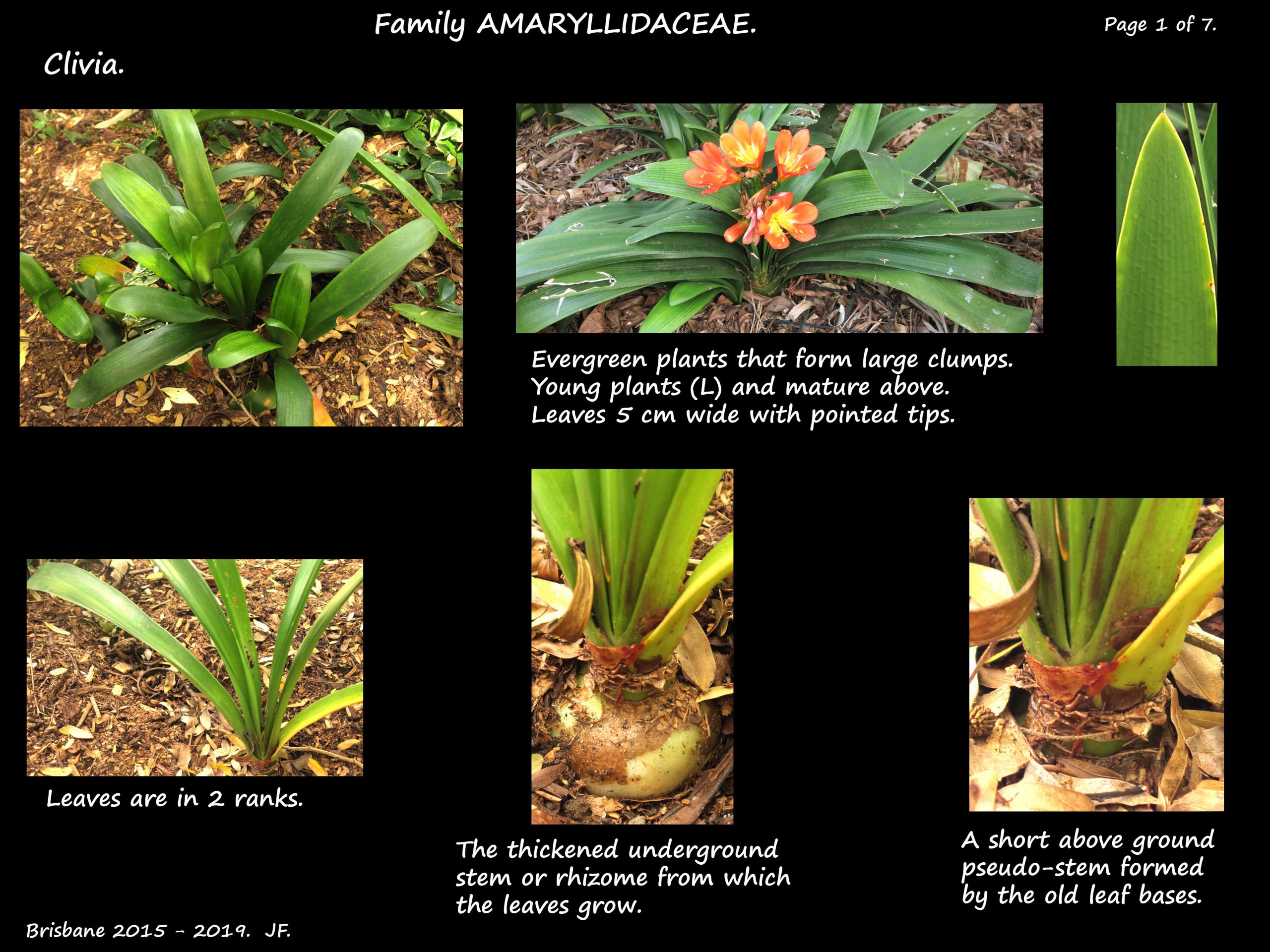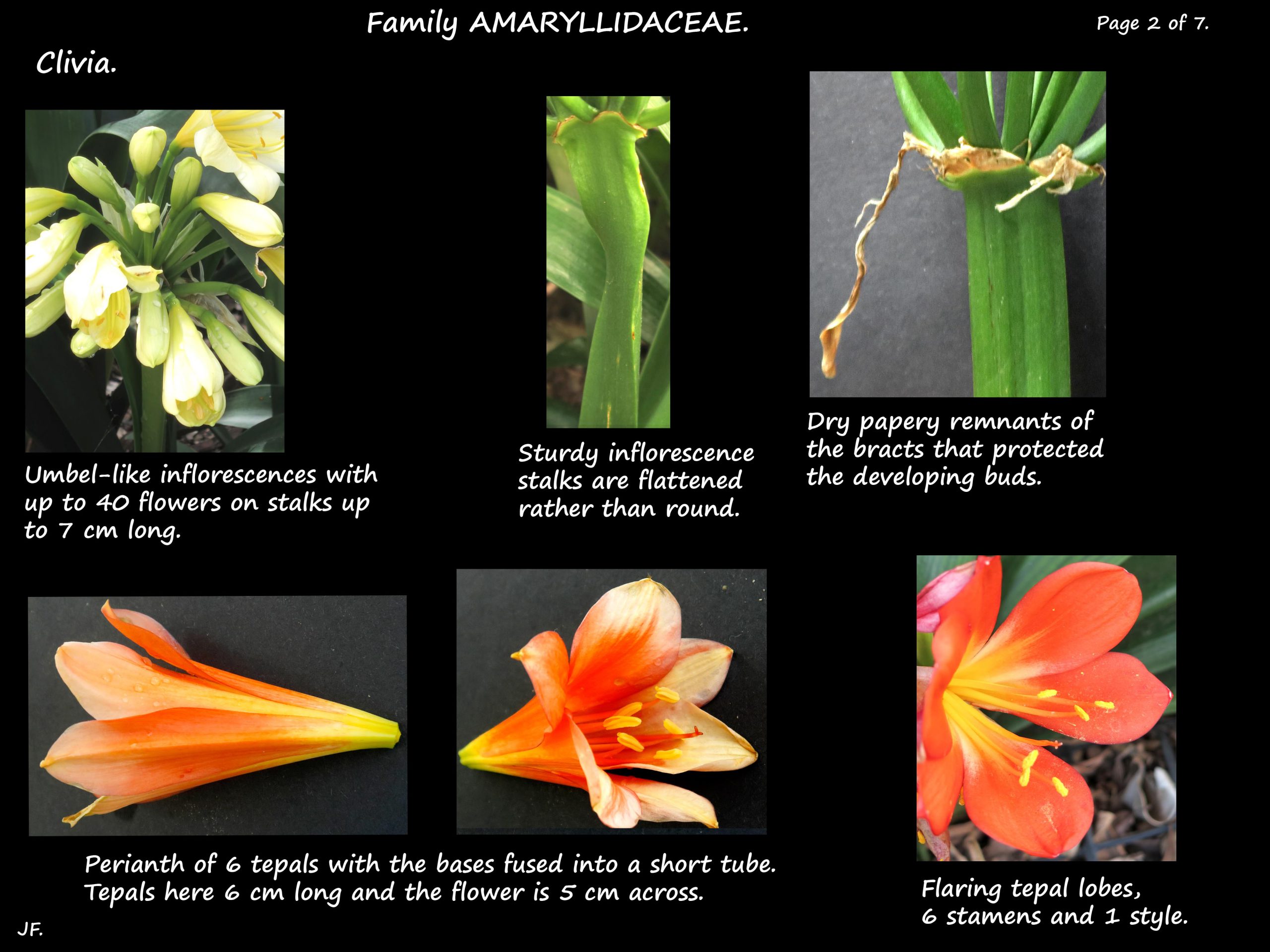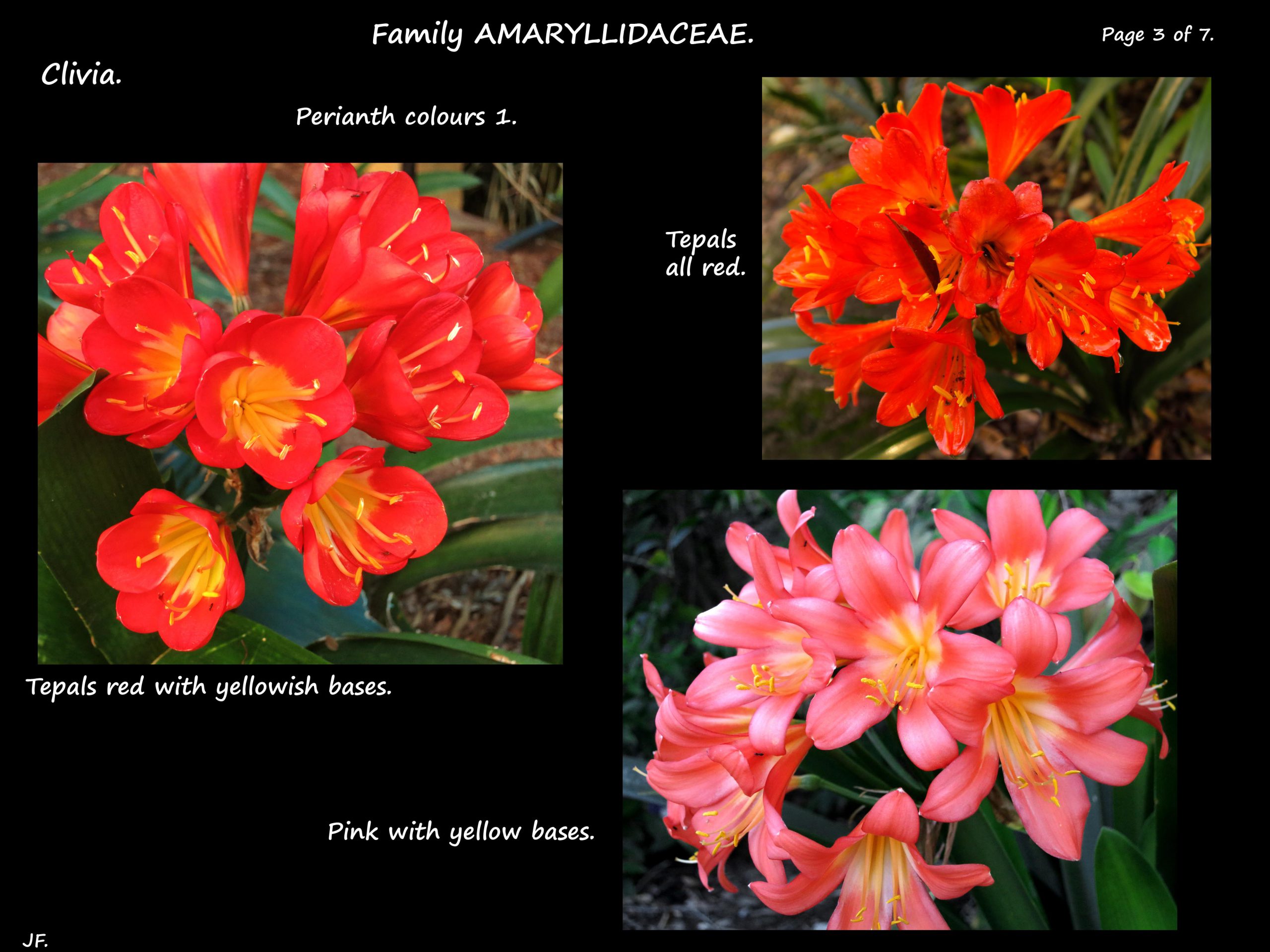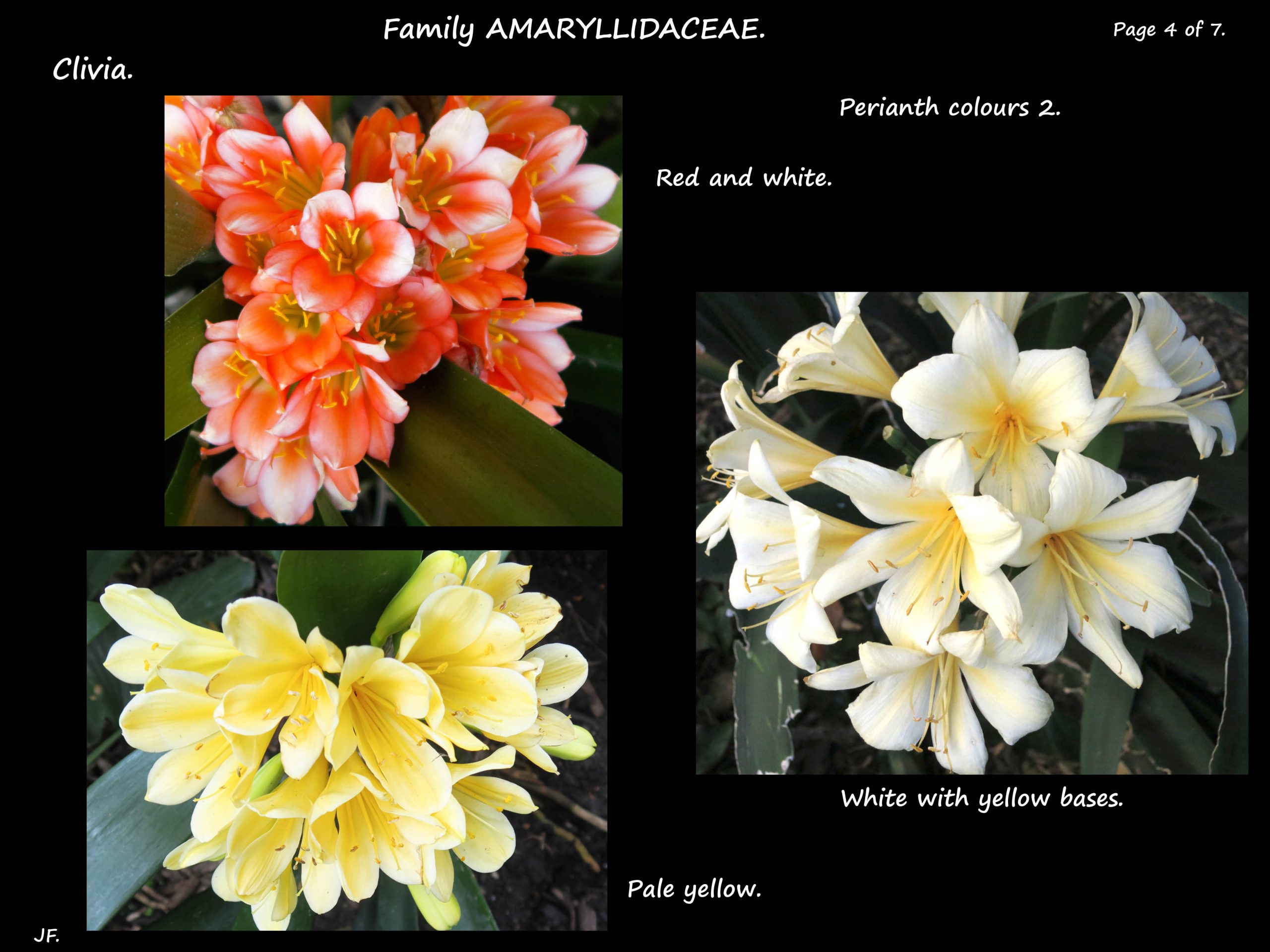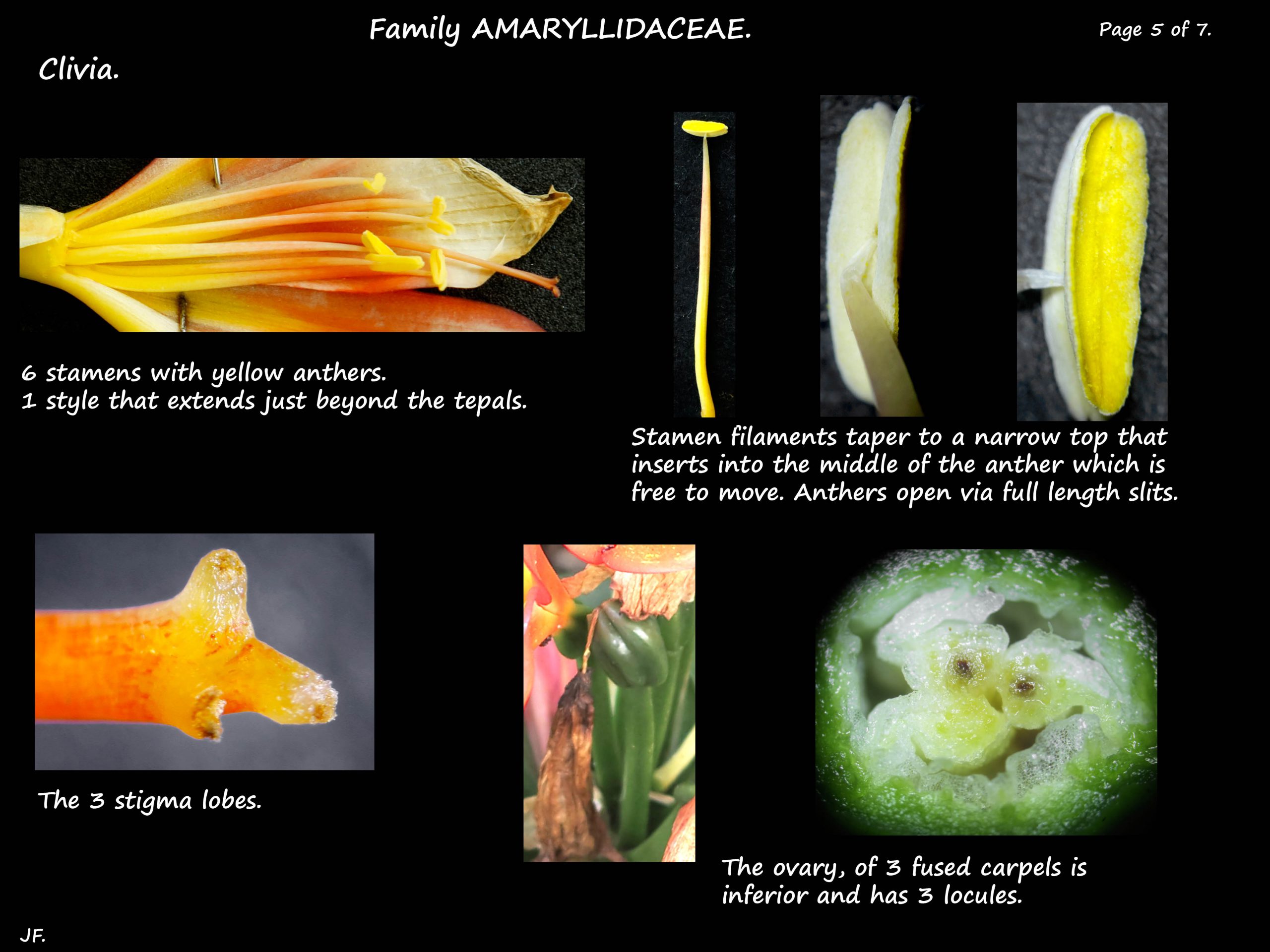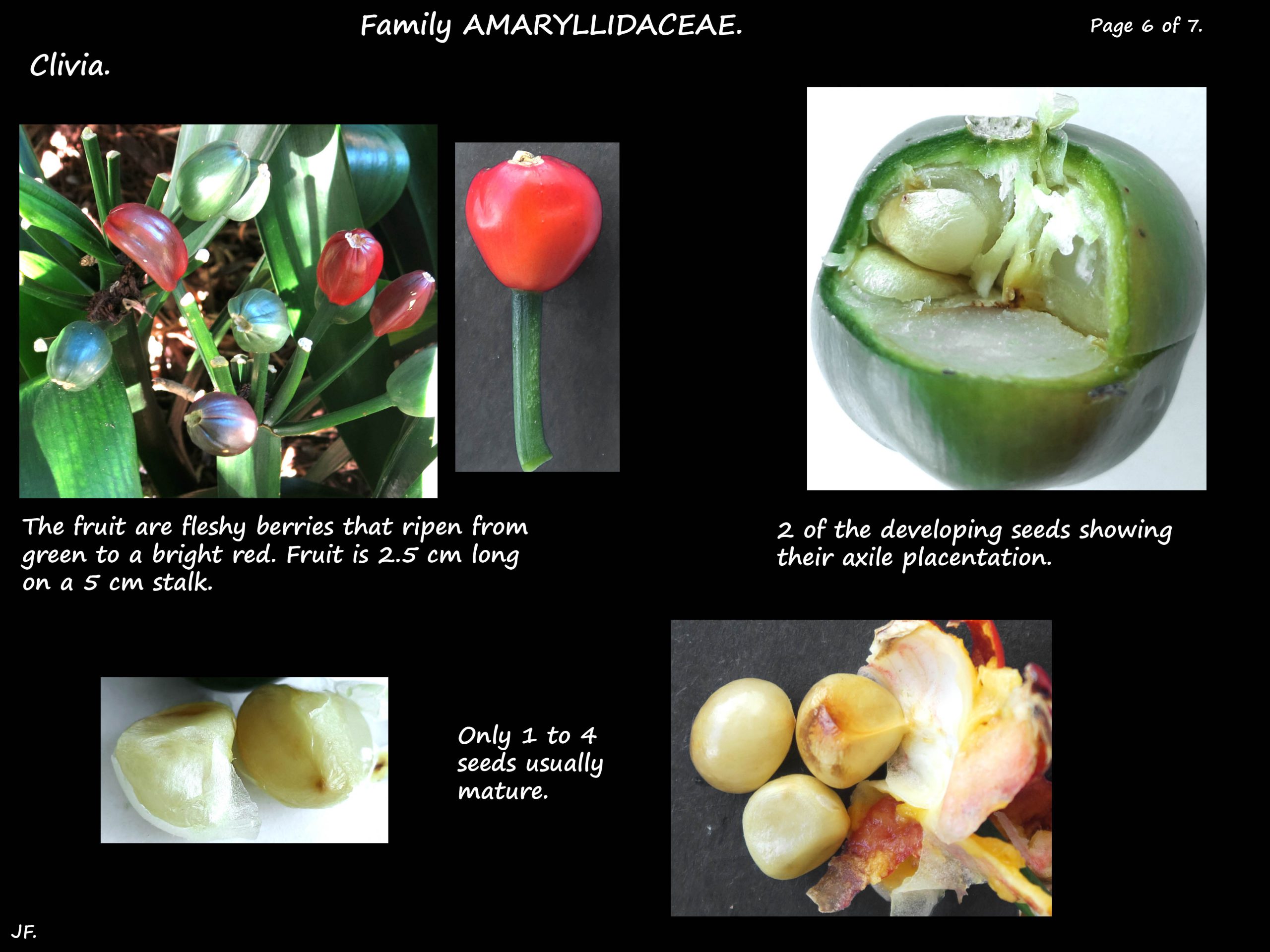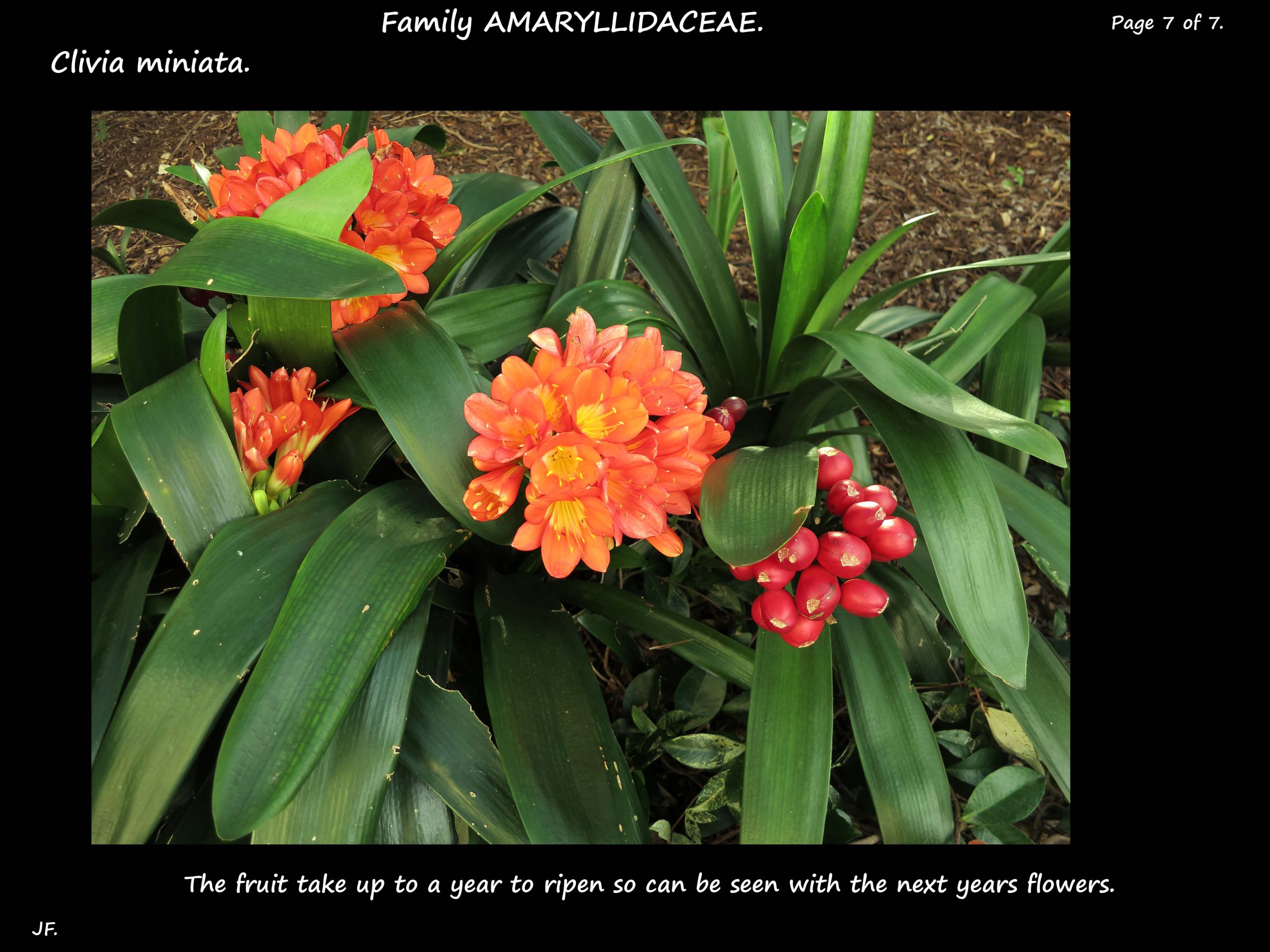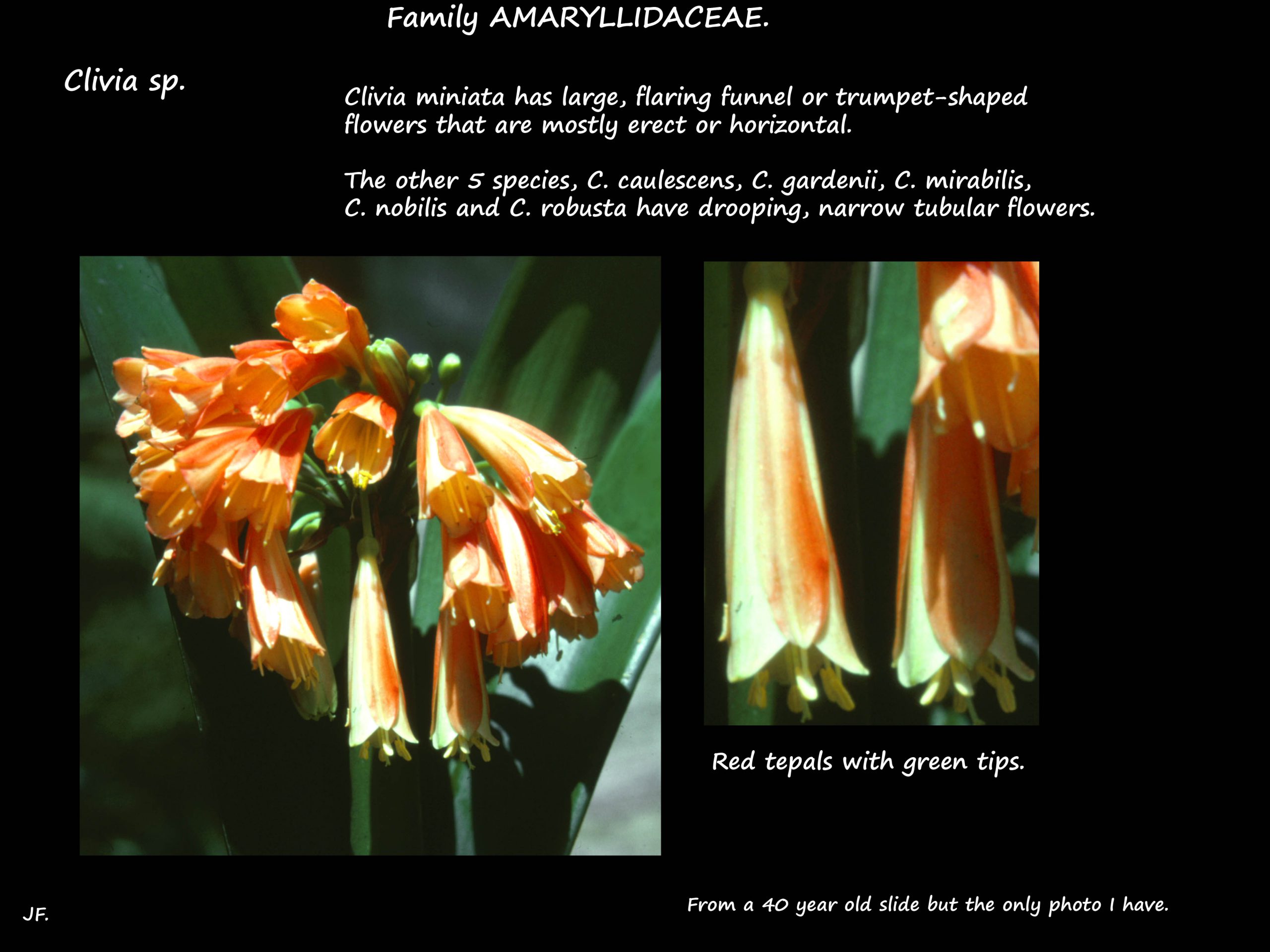Clivia.
Family Amaryllidaceae > Subfamily Amaryllidoideae > tribe Haemantheae.
Known as the Natal lily or bush lily there are six species – Clivia caulescens, C. gardenii,
C. miniata, C. mirabilis, C. nobilis and C. robusta.
Plants are evergreen, clump forming perennials.
The thick underground stem or rhizome has roots and the leaves arise from it, not a bulb.
The long leaves are strap-like.
Inflorescences have a sturdy leafless stalk with flowers in an umbel-like head.
There are several bracts around the flowers.
Individual, sometimes drooping flowers are on stalks.
Flowers have 6 tepals and the outer 3 are usually narrower.
The tepal bases are fused into a short tube.
The perianth can be narrow and tubular or a wider funnel-shape.
Colours are yellow to orange to red with green.
The 6 stamens have long filaments.
Filaments attach to the middle of the anther which is free to move (versatile).
The inferior ovary has 3 carpels and 3 locules each with 8 to 10 ovules.
Usually only 1 to 4 ovules develop into mature seeds.
The style and 3 lobed stigma may project beyond the tepals.
The fruit are berries that ripen from dark green to bright red or orange-red.
Fruit and flowers can be seen at the same time as the fruit takes up to 1 year to mature.
There are some natural hybrids between the species and many cultivars.
Clivia miniata.
Clumping plants that develop small above ground ‘stems’ as the old leaf bases accumulate.
The all green leaves are up to to 90 cm long and 2.5 to 7 cm wide with a pointed tip.
The umbel-like inflorescences have up to 40 flowers on a stout, leafless stem.
The flowers are unlike those of other species being upright and trumpet shaped.
They are large and can be up to 7 cm across.
Basic colours are orange with a yellow or white throat.
Plants can also be seen with deep red, yellow or white flowers.
They mainly flower in winter to spring but can have flowers at almost any time.
The berries, with up to 4 seeds, take 9 months to ripen.
All the other species have drooping, tubular flowers.
C. caulescens, C. gardenii, C. mirabilis, C. nobilis and C. robusta.
C. robusta and especially C. caulescens can develop above ground stems.
C. mirabilis and C. robusta have leaves up to 1.2 m or more long compared to around 80 cm for the others.
C. robusta leaves are wider being up to 9 cm across.
C. mirabilis has a marked median stripe on the leaves; C. nobilis and C. robusta a fainter one.
C. nobilis has a finely toothed leaf margin giving it a rough feel.
C. nobilis has a notch in the leaf tip, C. mirabilis and C. robusta have rounded tips and it is
pointed in C. gardenii and C. caulescens.
In C. mirabilis the base of the leaf is reddish-purple. In C. caulescens it can be red or green.
The inflorescence stem in C. gardenii and C. robusta is initially reddish then green.
The number of flowers in a head varies between 20 and 50 but C. gardenii tends to have about
half as many as the others.
In C. gardenii the flowers can be as long as C. miniata but all the rest have shorter flowers.
The pendulous flowers are only about 10 mm across.
The basic flower colour is orange tepals with green tips.
Colours vary with shades of red, yellow or pink.
C. gardenii has particularly prominent green tips.
Ovaries are green but in C. mirabilis it is initially red; also sometimes seen slightly in C. nobilis.
Flowering times also vary – C. caulescens and C. nobilis in late winter to spring, C. gardenii,
C. mirabilis, and C. robusta are all autumn flowering.
J.F.

